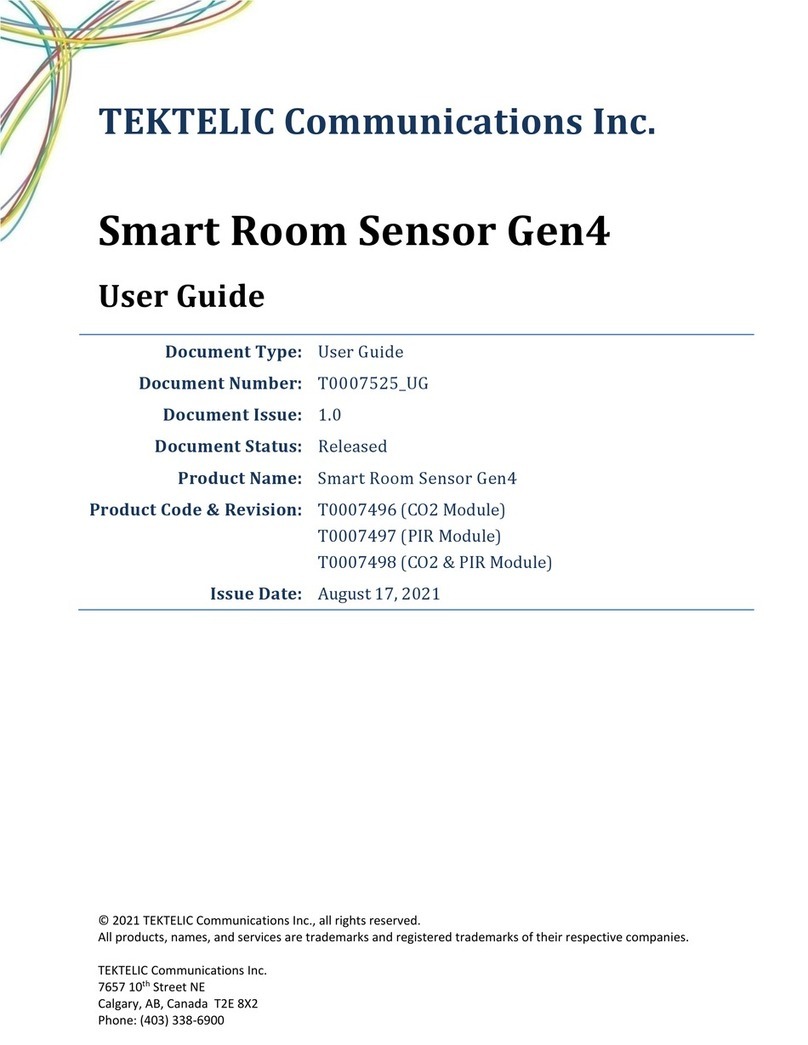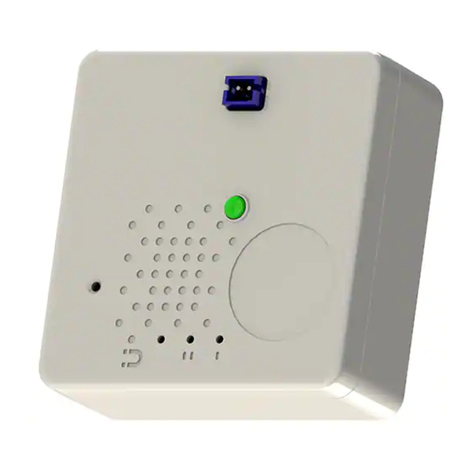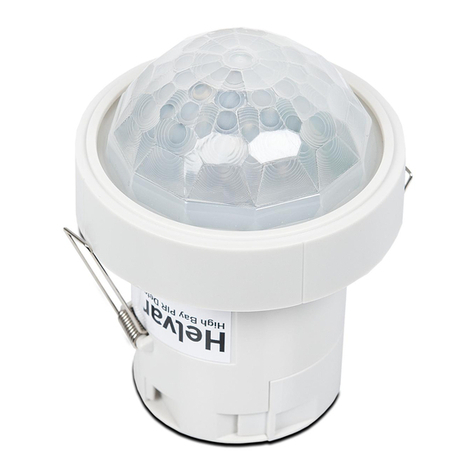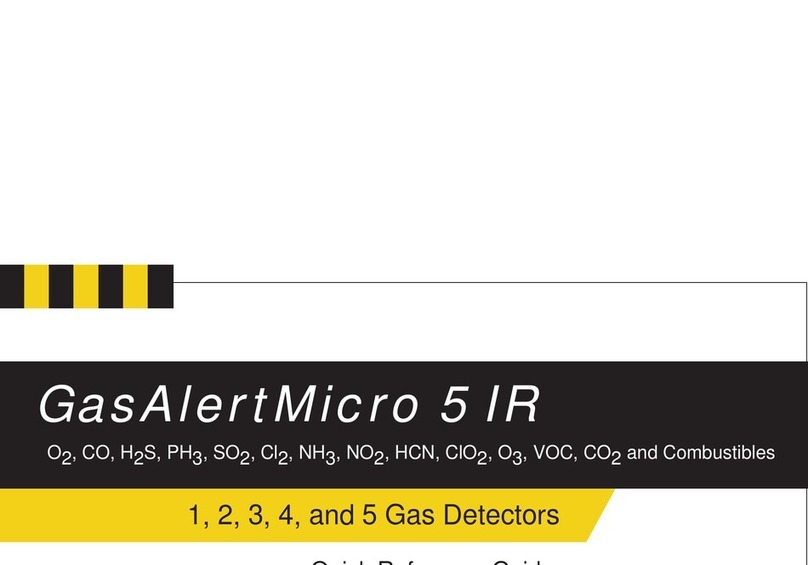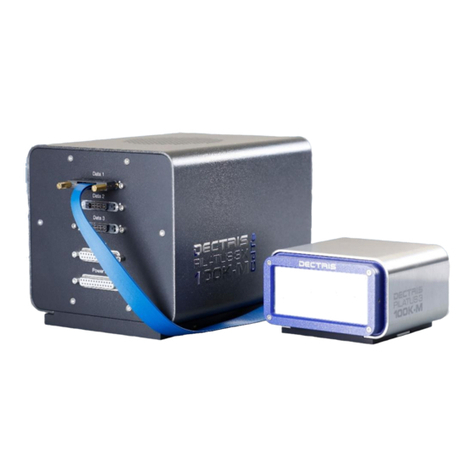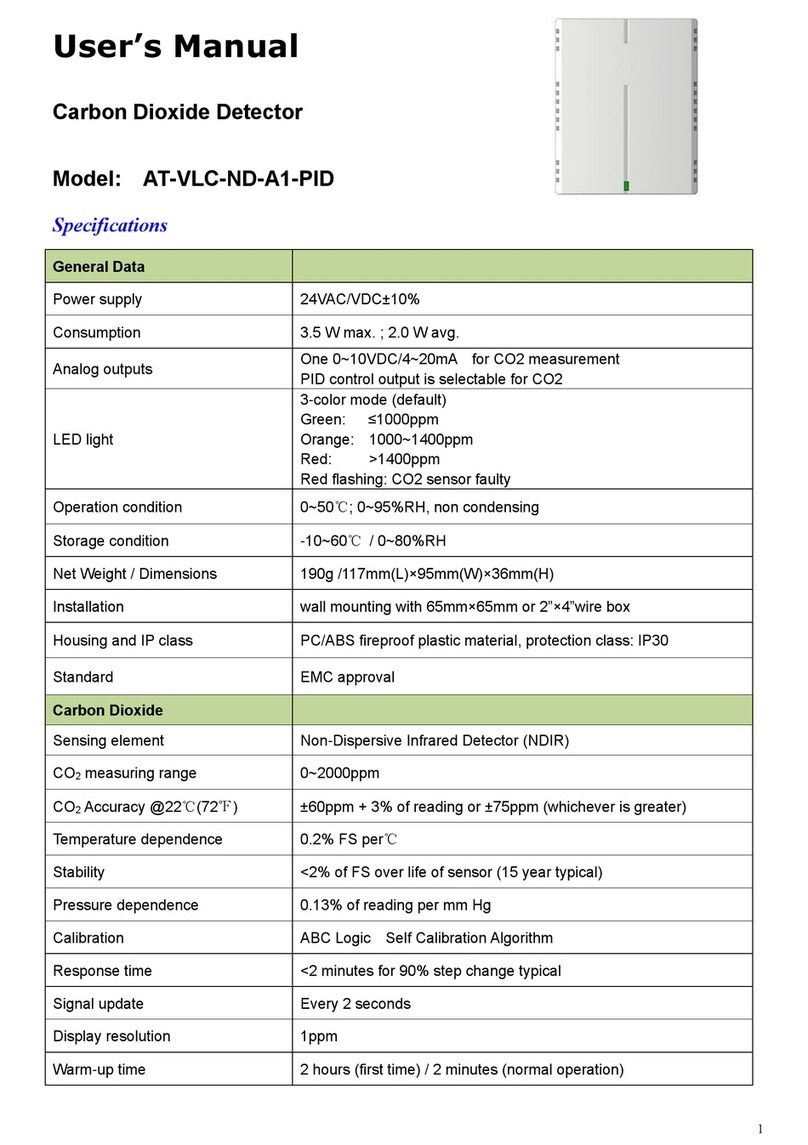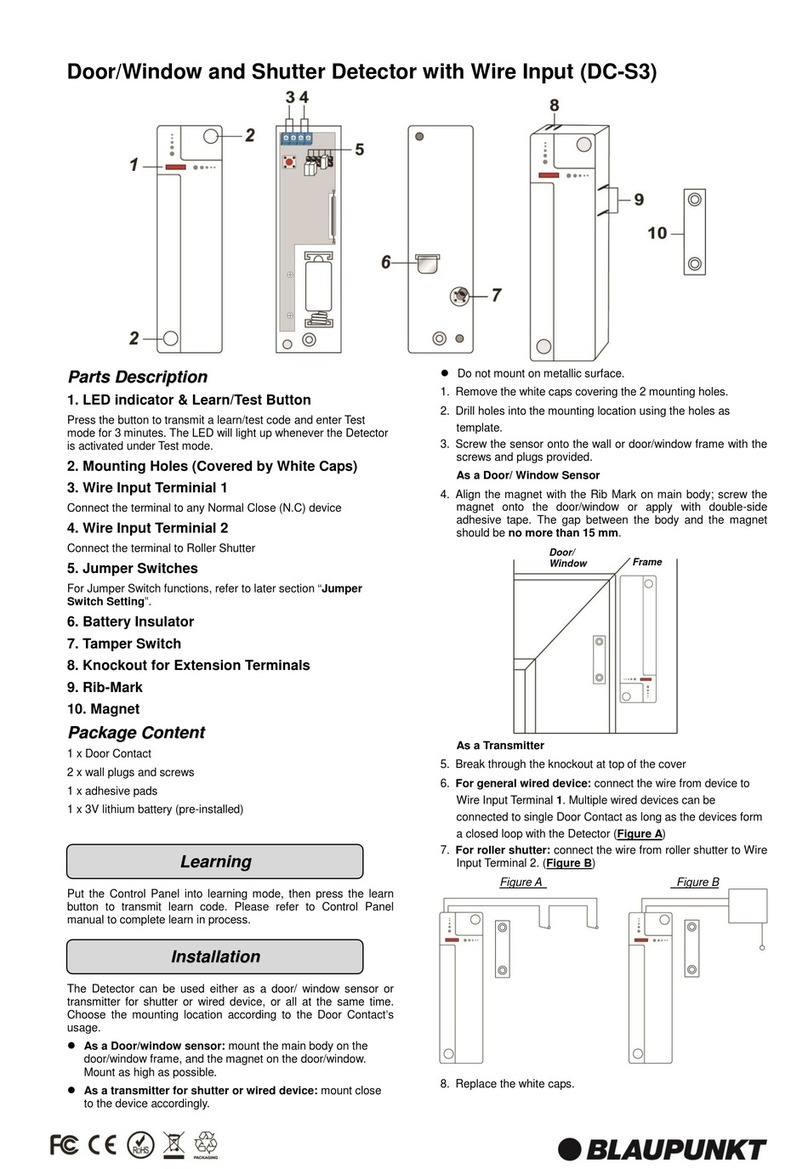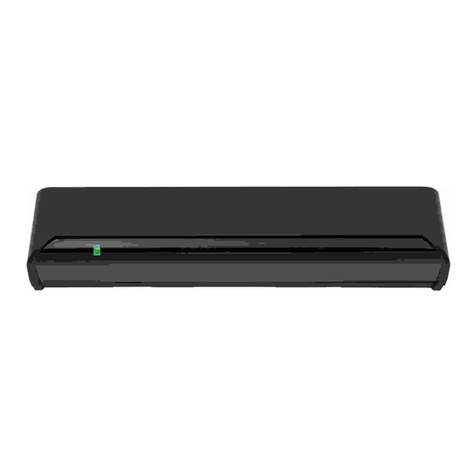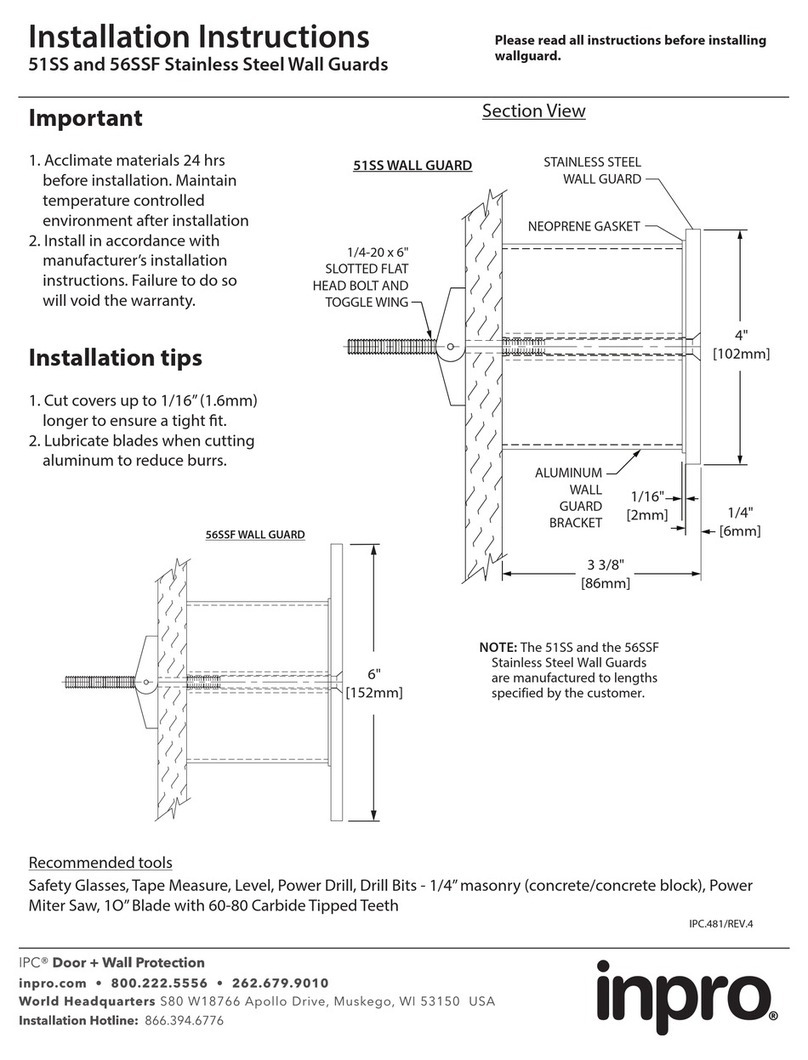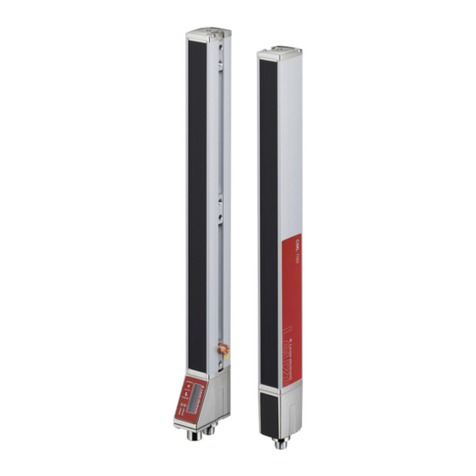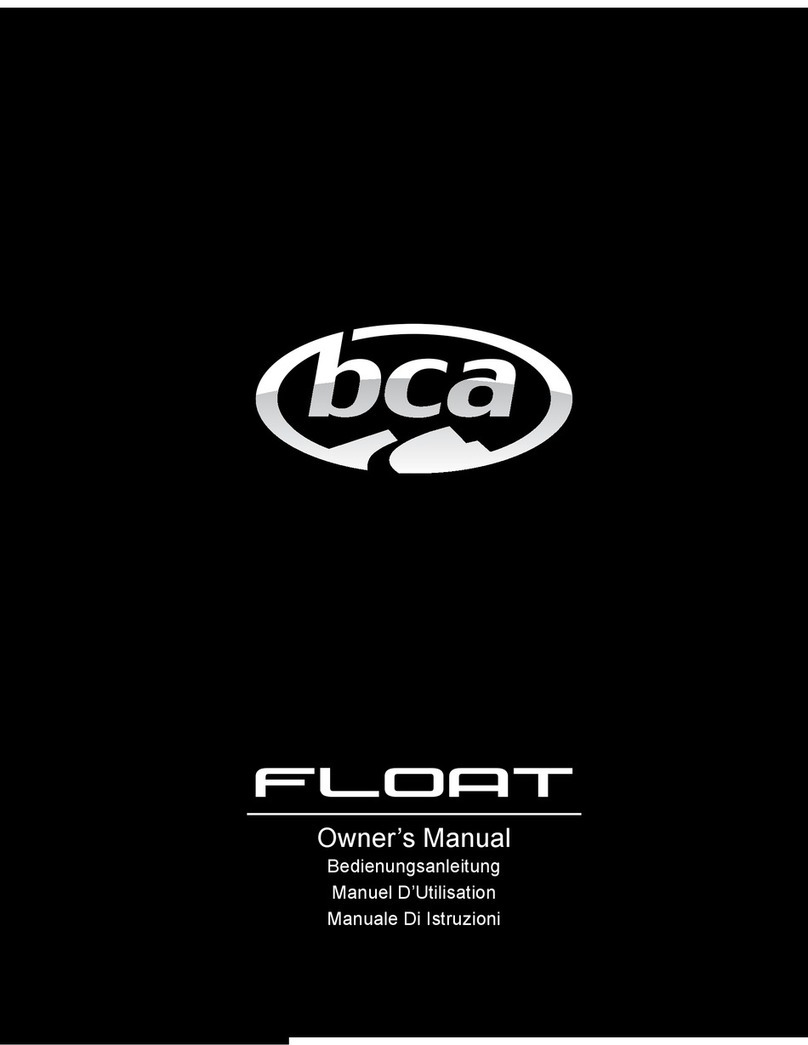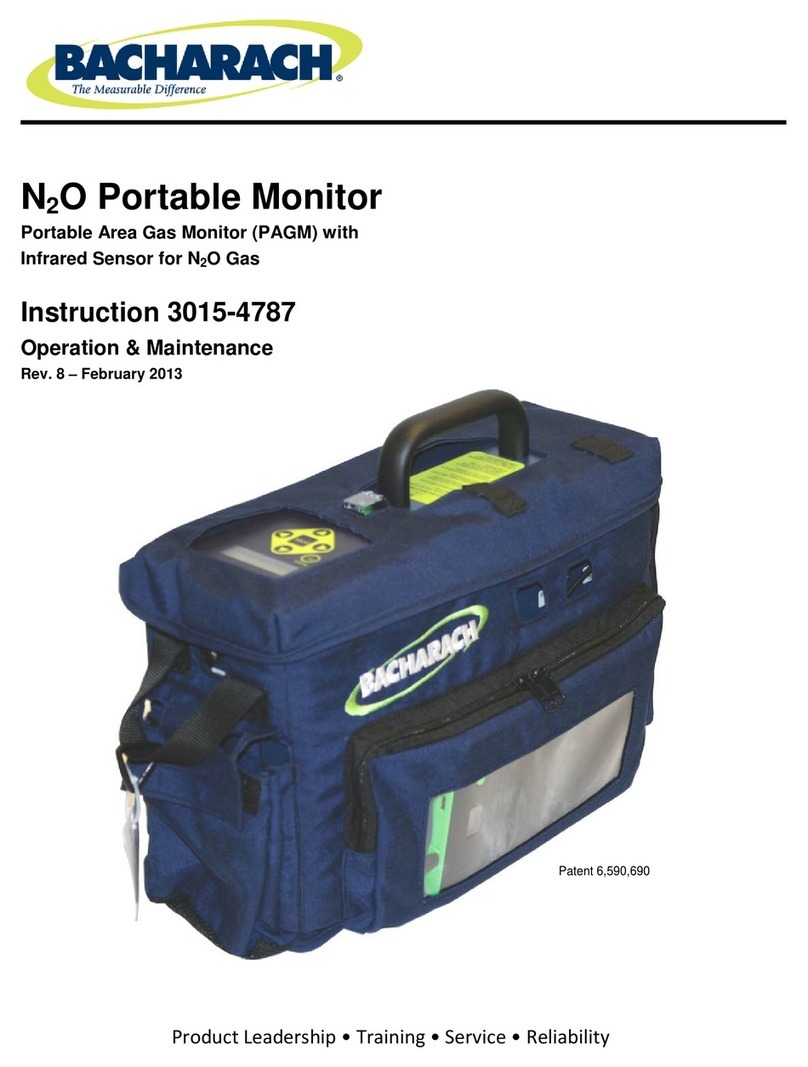TEKTELIC Communications BREEZE User manual

© 2022 TEKTELIC Communications Inc., all rights reserved.
All products, names, and services are trademarks and registered trademarks of their respective companies.
BREEZE/BREEZE-V/VIVID+
User Guide
Document Type:
User Guide
Document Number:
T0007805_UG
Document Issue:
1.2
Document Status:
Release
Product Name:
Breeze/Breeze-V/Vivid+
Product Code:
T0007838 (Breeze Module)
T0007848 (Vivid+ Module)
T0007806 (Breeze-V Module)
Issue Date:
March 24, 2022

Breeze/Breeze-V/Vivid+ User Guide T0007805_UG Version 1.2
TEKTELIC Communications Inc. Page 2 of 22
Document Revision
Revision
Issue Date
Status
Editor
Comments
1.0
March 16, 2022
Release
Shania Stewart
Release based on T0007525_UG_ver1.0.
1.1
March 22, 2022
Release
Shania Stewart
Removed “Confidential” from footers.
1.2
March 24, 2022
Release
Shania Stewart
Updated the product marketing name
throughout the document.

Breeze/Breeze-V/Vivid+ User Guide T0007805_UG Version 1.2
TEKTELIC Communications Inc. Page 3 of 22
Table of Contents
1Product Description................................................................................................................. 7
1.1 Overview .......................................................................................................................... 7
1.2 Specifications.................................................................................................................... 9
1.3 Transducer Details.......................................................................................................... 10
1.3.1 Temperature/Humidity Transducer........................................................................ 10
1.3.2 Ambient Light Transducer....................................................................................... 12
1.3.3 Barometer ............................................................................................................... 12
1.3.4 CO2Transducer ....................................................................................................... 12
1.3.5 PIR Transducer ........................................................................................................ 12
2Installation ............................................................................................................................. 14
2.1 Included Product and Installation Material ................................................................... 14
2.2 Safety Precautions.......................................................................................................... 14
2.3 Unpacking and Inspection.............................................................................................. 14
2.4 Required Equipment for Installation.............................................................................. 14
2.5 Breeze/Breeze-V/Vivid+ Mounting ................................................................................ 14
3Power Up, Commissioning, and Monitoring ......................................................................... 16
3.1 Required Equipment ...................................................................................................... 16
3.2 Power Up/Down Procedure ........................................................................................... 16
4Operations, Alarms, and Management ................................................................................. 17
4.1 Configuration.................................................................................................................. 17
4.2 Default Configuration..................................................................................................... 17
4.3 LED Behavior .................................................................................................................. 18
4.4 Push-Button Functions ................................................................................................... 19
4.4.1 CO2Calibration Button............................................................................................ 19
4.4.2 Reset Button ........................................................................................................... 19
5Compliance Statements......................................................................................................... 20
References .................................................................................................................................... 22

Breeze/Breeze-V/Vivid+ User Guide T0007805_UG Version 1.2
TEKTELIC Communications Inc. Page 4 of 22
List of Tables
Table 1-1: Transducers in Breeze/Breeze-V/Vivid+ ....................................................................... 7
Table 1-2: Breeze/Breeze-V/Vivid+ Specifications ......................................................................... 9
Table 4-1: Breeze/Breeze-V/Vivid+ Default Reporting Behavior................................................. 17

Breeze/Breeze-V/Vivid+ User Guide T0007805_UG Version 1.2
TEKTELIC Communications Inc. Page 5 of 22
List of Figures
Figure 1-1: Breeze/Breeze-V/Vivid+ Enclosures ............................................................................ 8
Figure 1-2: Breeze/Breeze-V/Vivid+ External Interfaces ............................................................... 9
Figure 1-3: The typical and maximal tolerance for %RH at 25°C................................................. 11
Figure 1-4: The typical and maximal tolerance for the temperature transducer at 25°C........... 11
Figure 4-1: Breeze/Breeze-V/Vivid+ With Marked LED Positions ................................................ 18

Breeze/Breeze-V/Vivid+ User Guide T0007805_UG Version 1.2
TEKTELIC Communications Inc. Page 6 of 22
List of Acronyms
ADR ............................Adaptive Data Rate
ALOHA........................Additive Links On-line Hawaii Area
BLE..............................Bluetooth Low Energy
CO2.............................Carbon Dioxide
CSS..............................Chirp Spread Spectrum
DTS .............................Digital Transmission System
EU...............................European
FCC..............................Federal Communications Commission
FH ...............................Frequency-Hopping
FHSS ...........................Frequency-Hopping Spread Spectrum
I2C or I2C.....................Inter-Integrated Circuit
IoT ..............................Internet of Things
IP ................................Ingress Protection
ISM .............................Industrial, Scientific, and Medical
LoRa ...........................Long-Range
LoRaWAN...................Long-Range Wide-Area Network
LPWAN .......................Low-Power Wide Area Network
LTC..............................Lithium Thionyl Chloride
MAC............................Media Access Control
MCU ...........................Microcontroller Unit
NA ..............................North American
NS ...............................Network Server
OD ..............................Operational Description
PCBA...........................Printed Control Board Assembly
PRNG ..........................Pseudo-Random Number Generator
RF ...............................Radio Frequency
RSSI ............................Received Signal Strength Indicator
Rx ...............................Receive
SPI ..............................Serial Peripheral Interface
Tx................................Transmit

Breeze/Breeze-V/Vivid+ User Guide T0007805_UG Version 1.2
TEKTELIC Communications Inc. Page 7 of 22
1Product Description
1.1 Overview
The Breeze/Breeze-V/Vivid+ is a multi-purpose LoRaWAN IoT sensor packed into a very small
form factor. The Breeze, Breeze-V, and Vivid+ are all variants in the same sensor family, each
with different sensing capabilities. The Sensor is ideal for monitoring and reporting CO2
concentration, human motion, temperature, humidity, light, and barometric air pressure in an
indoor environment.
The Sensor is also designed to communicate with a 2.9’’ wireless e-Ink BLE Display that allows
room occupants to locally view the latest measurements from select transducers taken in real-
time. The Display will show the most recent CO2, temperature, and humidity measurements
taken from the Sensor, as well as the remaining battery capacity of the Sensor and Display. The
Sensor is designed to only communicate with the BLE Display that is shipped with the Sensor.
All three functional variants are LoRaWAN-capable end-devices that are capable of supporting
Tx/Rx in the following frequency bands as specified in the LoRaWAN Regional Parameters v1.1
[1]: AS923, AU915, EU868, IN865, KR920, RU864, and US915. The variants that support BLE
Tx/Rx operate in the 2.4 GHz band according to the BLE 5.2 specification [2].
Table 1-1 presents the features available in the three functional variants (Breeze, Vivid+, and
Breeze-V).
Table 1-1: Transducers in Breeze/Breeze-V/Vivid+
Sensing Function
Sensor Model
Breeze (T0007838)
Vivid+ (T0007848)
Breeze-V (T0007806)
Temperature
X
X
X
Relative Humidity
X
X
X
Light
X
X
X
Barometer
X
X
CO2
X
X
PIR
X
X
Figure 1-1 illustrates the Breeze, Breeze-V and Vivid+ variants. All variants share the same
external dimensions.

Breeze/Breeze-V/Vivid+ User Guide T0007805_UG Version 1.2
TEKTELIC Communications Inc. Page 8 of 22
(a) Breeze Model (b) Vivid+/Breeze-V Models
Figure 1-1: Breeze/Breeze-V/Vivid+ Enclosures
Figure 1-2 shows the enclosure external interfaces for each model. Four indicator LEDs are
present underneath the circular light pipe on the front of the enclosures. There are two push
buttons accessible by pin through holes on the front of the enclosures. There are also air vents
on the front of the enclosures and on two sides of the enclosure to provide adequate airflow
for the CO2transducer. The enclosures are kept closed with 4 screws at the back. The PIR
transducer is surrounded by a PIR mask located at the center of the enclosure for models that
include a PIR transducer.

Breeze/Breeze-V/Vivid+ User Guide T0007805_UG Version 1.2
TEKTELIC Communications Inc. Page 9 of 22
Figure 1-2: Breeze/Breeze-V/Vivid+ External Interfaces
1.2 Specifications
The Breeze/Breeze-V/Vivid+ specifications are listed in Table 1-2.
Table 1-2: Breeze/Breeze-V/Vivid+ Specifications
Parameter
Specification
Use environment
Indoor commercial/residential only
Operating temperature
0°C‒60°C
Storage temperature
-40°C‒60°C
RH
5%‒95%, non-condensing
Size
80 mm x 80 mm x 26 mm (without mounting clip)
80 mm x 80 mm x 30 mm (with mounting clip)
Weight
128 g (with battery)
Power source
Battery operated (2xAA), with diode-based reverse polarity
protection.
Network technology/Frequency band
LoRaWAN with different regional variants (see [1]) and BLE
operating in 2.4 GHz ISM frequency bands
Air interface
LoRa and GFSK

Breeze/Breeze-V/Vivid+ User Guide T0007805_UG Version 1.2
TEKTELIC Communications Inc. Page 10 of 22
Parameter
Specification
Sensor Lifetime
Breeze model with optimum settings and baseline use case:1
•> 5.5 years with 2xAA LTC batteries
Vivid+ model with optimal settings and baseline use case:
•> 4.7 years with 2xAA LTC batteries
Breeze-V model with optimal settings and baseline use case:
•> 4.6 years with 2xAA LTC batteries
Maximum transmit power
LoRa: 15 dBm
GFSK: 0 dBm
Number of indicator LEDs
4 (2 green, 1 yellow, and 1 red)
Measurement sensing functions
Temperature, humidity, light, pressure, CO2
Detection sensing functions
Human movement
Temperature measurement accuracy
< ±0.3°C between 0°C and 5°C
±0.2°C between 5°C and 60°C
Humidity measurement accuracy
< ±4% between 0% and 100%
±2% between 20% and 80%
Light sensitivity
Detection of weak light to typical work light conditions (5 lux to
1000 lux)2
Peak sensitivity at 550 nm
Pressure measurement accuracy
< ±2 hPa between 300 hPa and 1100 hPa
CO2concentration measurement
accuracy
±30 ppm +3% of reading between 400 ppm and 5000 ppm
Extended range ±10% of reading for an extended range of up to
10000 ppm3
Motion detection
Pyroelectric infrared sensor
Ceiling mount:
•X-angle: 104° (no mask)
•Y-angle: 104° (no mask)
Height: 3 m (no mask)
1.3 Transducer Details
1.3.1 Temperature/Humidity Transducer
The Breeze/Breeze-V/Vivid+ includes a combination temperature/humidity transducer from
Sensirion (SHTC3). It is a small footprint, very low power device. It features operation over I2C
protocol and operates from 0% to 100% RH and -40°C to 125°C with a typical accuracy of ±2%
RH and ±0.2°C. The typical and maximum accuracies specified across the operating relative
1Baseline use case assumes room temperature, LoRa Tx power of 15 dBm, LoRa SF 10, and LoRa BW of 125 kHz.
Optimal battery settings use the default report settings and with dynamic reporting mode enabled. PIR motion
detection is assumed to be very frequent during active hours and very infrequent during inactive hours.
2The sensor provides light intensity measurements, but they are not calibrated in lux. See the Technical Reference
Manual for more details [3].
3No data available from manufacturer on performance outside the range of 15°C to 35°C and 0% to 80% RH.

Breeze/Breeze-V/Vivid+ User Guide T0007805_UG Version 1.2
TEKTELIC Communications Inc. Page 11 of 22
humidity and temperature range of the sensor are shown in Figure 1-3 and Figure 1-4,
respectively.
Figure 1-3: The typical and maximal tolerance for %RH at 25°C
Figure 1-4: The typical and maximal tolerance for the temperature transducer at 25°C

Breeze/Breeze-V/Vivid+ User Guide T0007805_UG Version 1.2
TEKTELIC Communications Inc. Page 12 of 22
1.3.2 Ambient Light Transducer
A phototransistor and bias resistor form a light detection transducer on the Breeze/Breeze-
V/Vivid+. The light sensor provides a sufficient window of detection to allow detection of
desired light levels. This window will be tuned as necessary by changing the resistor to give a
detection window corresponding to the light levels to be detected. The output of the light
transducer is an analog voltage that is read by the MCU ADC.
Vishay’s TEMT6200FX1 is a phototransistor specifically designed for ambient light sensing as it
includes a filter to give a response similar to the human eye, thus being capable of detecting
weak light to typical work light conditions.
1.3.3 Barometer
A barometer is included in the Breeze/Breeze-V/Vivid+ in order to measure the barometric air
pressure. TE Connectivity’s MS5607-02BA03 is designed for low power applications while
providing highly accurate measurements. The sensor can operate at full accuracy over a range
of 300 hPa to 1100 hPa, and can communicate over I2C or SPI protocols.
It also includes a temperature sensor in order to correct for the non-linearity of the pressure
measurements over temperature. The pressure accuracy of the sensor is ±2 hPa while
operating between 0°C and 50°C. The barometer also offers an extended pressure range from
10 hPa to 1200 hPa with reduced accuracy. The barometer’s temperature accuracy is ±2°C
while operating between -20°C and 85°C.
1.3.4 CO2Transducer
The Breeze/Breeze-V/Vivid+ includes the Senseair Sunrise to measure the CO2concentration
using non-dispersive infrared (NDIR). It operates over an I2C interface and can measure in the
range of 400 ppm to 5000 ppm with an accuracy of up to ±30 ppm +3% of the reading. This
sensor also features an extended range of up to 10000 ppm with a projected accuracy of
extended range ±10% of the reading.
1.3.5 PIR Transducer
A motion detection feature on the Breeze/Breeze-V/Vivid+ is implemented with a PIR sensor.
Panasonic’s EKM1291111 is specifically designed to be sensitive enough to detect small
movements with a wide field of view of 104° x 104°.
The motion detection system uses a ceiling mount type lens that has an expected coverage area
of 7.7 m x 7.7 m when ceiling mounted at a height of 3 m. Note that this is the theoretical

Breeze/Breeze-V/Vivid+ User Guide T0007805_UG Version 1.2
TEKTELIC Communications Inc. Page 13 of 22
maximum sense range claimed by the transducer manufacturer. The sense range is determined
as the projection of the transducer FoV on the ground, and therefore, should not be interpreted
as the coverage area where the sensor can detect moving people. In general, due to the conical
nature of the transducer FoV, people need to be closer to the sensor to be detected. The
amount of IR radiation from a moving person, which is also impacted by the person’s clothing
or type of skin cover, also plays an important role at determining the detection range.

Breeze/Breeze-V/Vivid+ User Guide T0007805_UG Version 1.2
TEKTELIC Communications Inc. Page 14 of 22
2Installation
2.1 Included Product and Installation Material
The following items are included with each sensor:
•A Breeze, Breeze-V, or Vivid+
•e-Ink Display (if one is ordered with the Sensor)
•Mounting Bracket
•User Guide
2.2 Safety Precautions
The following safety precautions should be observed:
•The Breeze/Breeze-V/Vivid+ is intended for indoor use only.
•The Breeze/Breeze-V/Vivid+ contains lithium batteries.
•NEVER allow small children near batteries: if a battery is swallowed, immediately seek
medical attention.
•To reduce risk of fire, explosion or chemical burns: replace only with approved 2xAA LTC
batteries; DO NOT recharge, disassemble, heat above 100°C (212°F) or incinerate
battery
2.3 Unpacking and Inspection
The following should be considered during the unpacking of a new Breeze/Breeze-V/Vivid+:
1. Inspect the shipping carton and report any significant damage to TEKTELIC.
2. Unpacking should be conducted in a clean and dry location.
3. Do not discard the shipping box or inserts as they will be required if a unit is returned
for repair or re-configuration.
2.4 Required Equipment for Installation
There are no tools required for Breeze/Breeze-V/Vivid+ installation.
2.5 Breeze/Breeze-V/Vivid+ Mounting
The Breeze/Breeze-V/Vivid+ is designed to be mounted using the supplied mounting bracket.
The bracket can be attached using screws or double-sided tape (not included).

Breeze/Breeze-V/Vivid+ User Guide T0007805_UG Version 1.2
TEKTELIC Communications Inc. Page 15 of 22
When mounting on a vertical surface, ensure that the Sensor will not be orientated with the
case retaining screws towards the ceiling. This could cause the Sensor to accidently slip off the
mount and fall. There are no orientation concerns when the Sensor is mounted to a horizontal
surface.

Breeze/Breeze-V/Vivid+ User Guide T0007805_UG Version 1.2
TEKTELIC Communications Inc. Page 16 of 22
3Power Up, Commissioning, and Monitoring
3.1 Required Equipment
No special equipment is required to power on the Breeze/Breeze-V/Vivid+.
3.2 Power Up/Down Procedure
Once the sensor information has been added to the Network Server, pull out the battery tabs
to engage the battery. The batteries must be removed to turn off the device, but the external
reset button can be pushed to simply reset the device; see Section 4.4.2 for description of the
reset function.

Breeze/Breeze-V/Vivid+ User Guide T0007805_UG Version 1.2
TEKTELIC Communications Inc. Page 17 of 22
4Operations, Alarms, and Management
4.1 Configuration
The Breeze/Breeze-V/Vivid+ supports a full range of Over-the-Air (OTA) configuration options.
Specific technical details are available in the Breeze/Breeze-V/Vivid+ Technical Reference
Manual [3]. All configuration commands need to be sent OTA during a sensor’s downlink
windows.
4.2 Default Configuration
If dynamic reporting mode is enabled, the default configuration of the Breeze/Breeze-V/Vivid+
is as shown in Table 4-1. If dynamic reporting mode is not enabled, the Sensor will act as if it is
exclusively in active mode.
Table 4-1: Breeze/Breeze-V/Vivid+ Default Reporting Behavior
Parameter
Report
Destination
Default Reporting Frequency
During Active Mode
During Inactive Mode
Remaining Battery
Capacity of the Sensor
NS and Display
Every 5 (five) minutes
Every 1 (one) hour
Remaining Battery
Capacity of the Display
NS and Display
Every 5 (five) minutes
Every 1 (one) hour
Ambient Temperature
NS and Display
Every 5 (five) minutes
Every 1 (one) hour
Ambient Relative
Humidity
NS and Display
Every 5 (five) minutes
Every 1 (one) hour
CO2 Concentration
NS and Display
Every 5 (five) minutes
Every 1 (one) hour
Pressure
NS only
Every 5 (five) minutes
Every 1 (one) hour
Motion
NS only
Report motion after 1 (one)
PIR event
Clear motion after 5 (five)
minutes of no motion
Report motion after 1 (one)
PIR event
Clear motion after 5 (five)
minutes of no motion
Note:
•CO2concentration and pressure are reported by Breeze and Breeze-V models only. For
the Vivid+ model, the Sensor will update the Display such that the CO2concentration
field will be blank.
•Motion is reported by Vivid+ and Breeze-V models only.

Breeze/Breeze-V/Vivid+ User Guide T0007805_UG Version 1.2
TEKTELIC Communications Inc. Page 18 of 22
4.3 LED Behavior
The Breeze/Breeze-V/Vivid+ is equipped with four LEDs: two green (G1 and G2), one yellow
(Y1), and one red (R1). Figure 4-1 shows the placements of each LED relative to a user facing the
Sensor for reference.
Figure 4-1: Breeze/Breeze-V/Vivid+ With Marked LED Positions
During the join procedure:
•After the Sensor has gone through the initial boot procedure, the join procedure will
begin. During that time, the Y1 will blink continuously until the sensor has joined a
network.
During normal operation:
•G1 will blink when the Sensor transmits or receives a LoRa packet.
•G2 will begin to blink while the Sensor attempts to communicate with the Display.
oG2 will blink twice if the connection was successful.
oR2 will blink twice if the connection was unsuccessful.
•Y1 will blink after the CO2calibration push-button is pressed and released.
oG2 blinks three times if any CO2calibration was successful.
oR1 blinks three times if any CO2calibration was unsuccessful.

Breeze/Breeze-V/Vivid+ User Guide T0007805_UG Version 1.2
TEKTELIC Communications Inc. Page 19 of 22
4.4 Push-Button Functions
The Sensor includes two push buttons: one to manually calibrate the CO2transducer, and one
to reset the Sensor. Figure 1-2 shows the location of the CO2calibration and reset buttons
relative to a user facing the Sensor.
4.4.1 CO2Calibration Button
The Sensor features a push-button that can be used to manually calibrate the CO2transducer
when it is exposed to fresh air. The CO2calibration button must be pressed for 2 to 10 seconds,
and 30 seconds after the button is released, the Sensor performs a background CO2calibration
with a target of 400 ppm.
For optimal results, users should ensure that the Sensor is exposed to fresh air for several
minutes before the calibration occurs. It is also recommended that users move away from the
Sensor after pressing the button so as to reduce the risk of an inaccurate calibration. More
information on how to calibrate the CO2 transducer can be found in the Technical Reference
Manual [3].
4.4.2 Reset Button
There is a reset button on the device, that can be pushed by a pin, such as a paper clip. The
button should not be pushed hard. The reset is instant, i.e. the button does not need to be kept
pushed. The reset restarts the microprocessor. All the FW load and configuration parameters in
the Flash are remembered during the reset.

Breeze/Breeze-V/Vivid+ User Guide T0007805_UG Version 1.2
TEKTELIC Communications Inc. Page 20 of 22
5Compliance Statements
Federal Communications Commission
This device complies with Part 15 of the FCC Rules. Operation is subject to the following two
conditions:
1. This device may not cause harmful interference, and
2. This device must accept any interference received, including interference that may
cause undesired operation.
To comply with FCC exposure limits for general population / uncontrolled exposure, this device
should be installed at a distance of 20 cm from all persons and must not be co-located or
operating in conjunction with any other transmitter.
Changes or modifications not expressly approved by the party responsible for compliance could
void the user’s authority to operate the equipment. This equipment has been tested and found
to comply with the limits for a Class B digital device, pursuant to Part 15 of the FCC Rules. These
limits are designed to provide reasonable protection against harmful interference in a
residential installation. This equipment generates uses and can radiate radio frequency energy
and, if not installed and used in accordance with the instructions, may cause harmful
interference to radio communications. However, there is no guarantee that interference will
not occur in a particular installation. If this equipment does cause harmful interference to radio
or television reception, which can be determined by turning the equipment off and on, the user
is encouraged to try to correct the interference by one of the following measures:
•Reorient or relocate the receiving antenna.
•Increase the separation between the equipment and receiver.
•Connect the equipment into an outlet on a circuit different from that to which the
receiver is connected.
•Consult the dealer or an experienced radio/TV technician for help.
Innovation, Science and Economic Development Canada
This device contains licence-exempt transmitter(s)/receiver(s) that comply with Innovation,
Science and Economic Development Canada’s licence-exempt RSS(s). Operation is subject to
the following two conditions:
(1) This device may not cause interference.
(2) This device must accept any interference, including interference that may cause undesired
operation of the device.
This manual suits for next models
2
Table of contents
Other TEKTELIC Communications Security Sensor manuals
Popular Security Sensor manuals by other brands
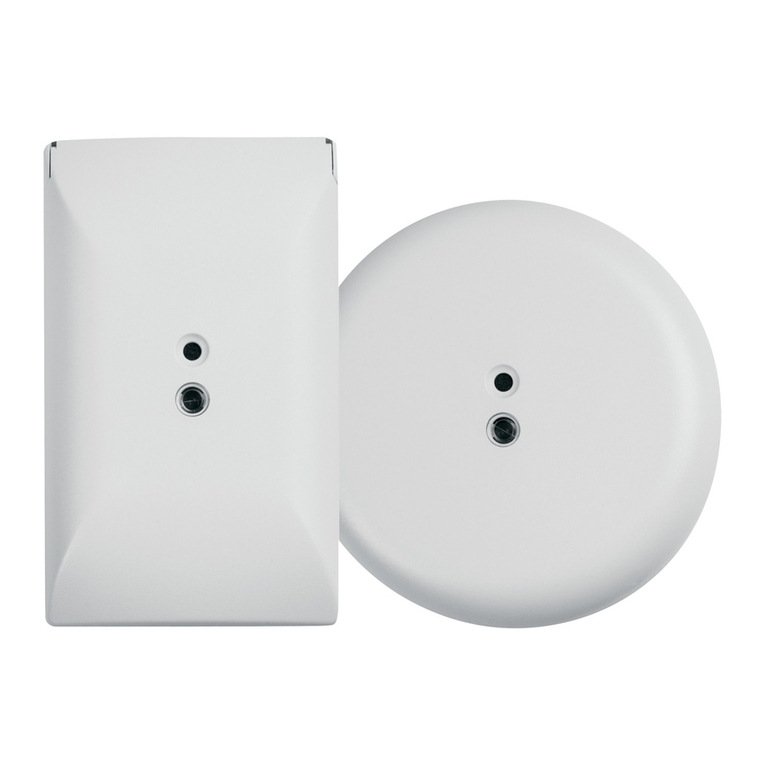
Interlogix
Interlogix R5812NT Installation instructions and use
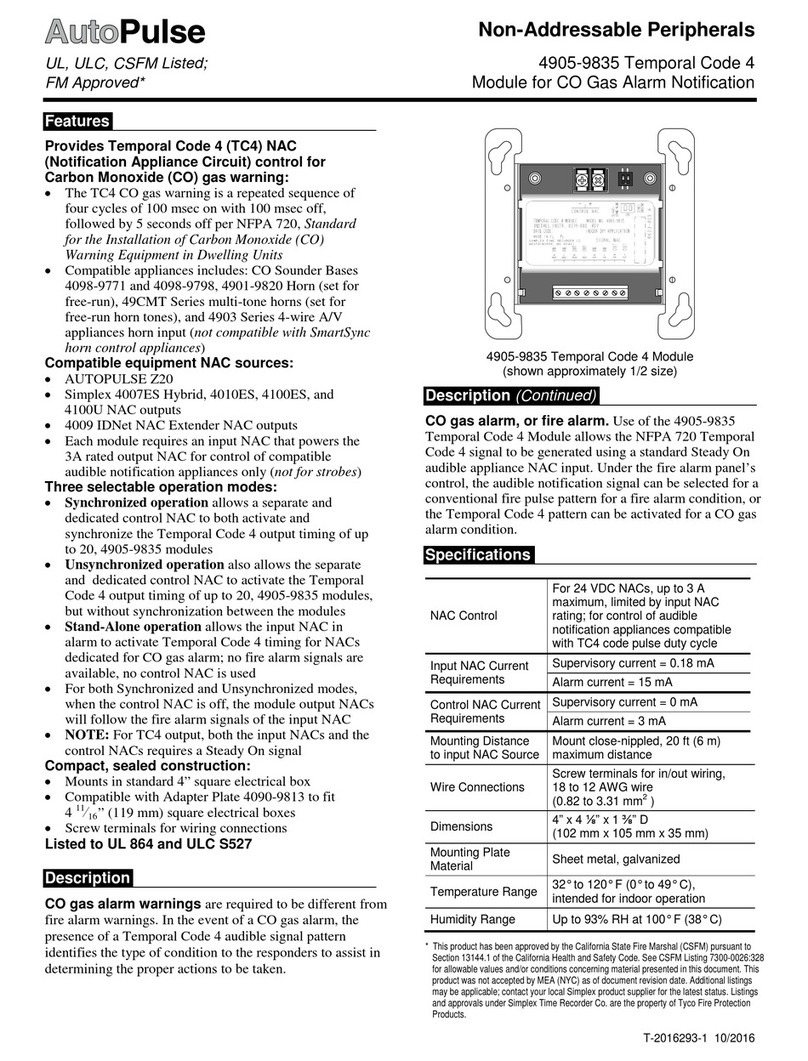
AutoPulse
AutoPulse Z-20 quick start guide
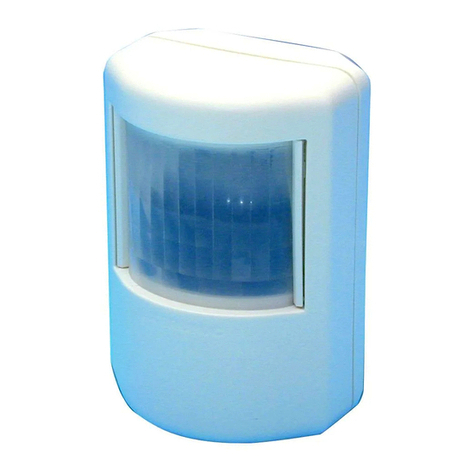
Extronic
Extronic PD-2200 installation instructions
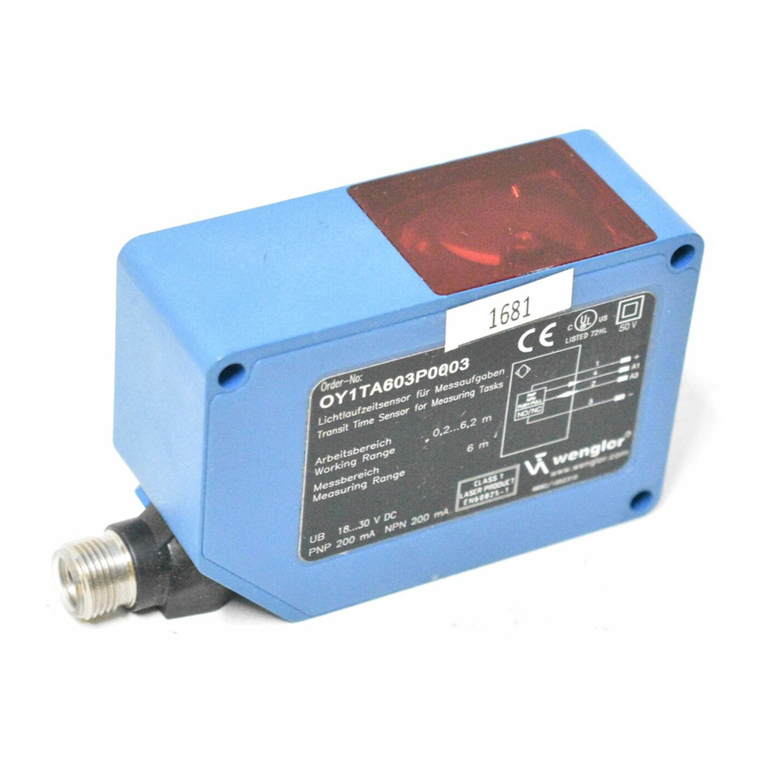
Wenglor
Wenglor Y1TA Series operating instructions

Integrated Power
Integrated Power HB1MSD01 instruction manual
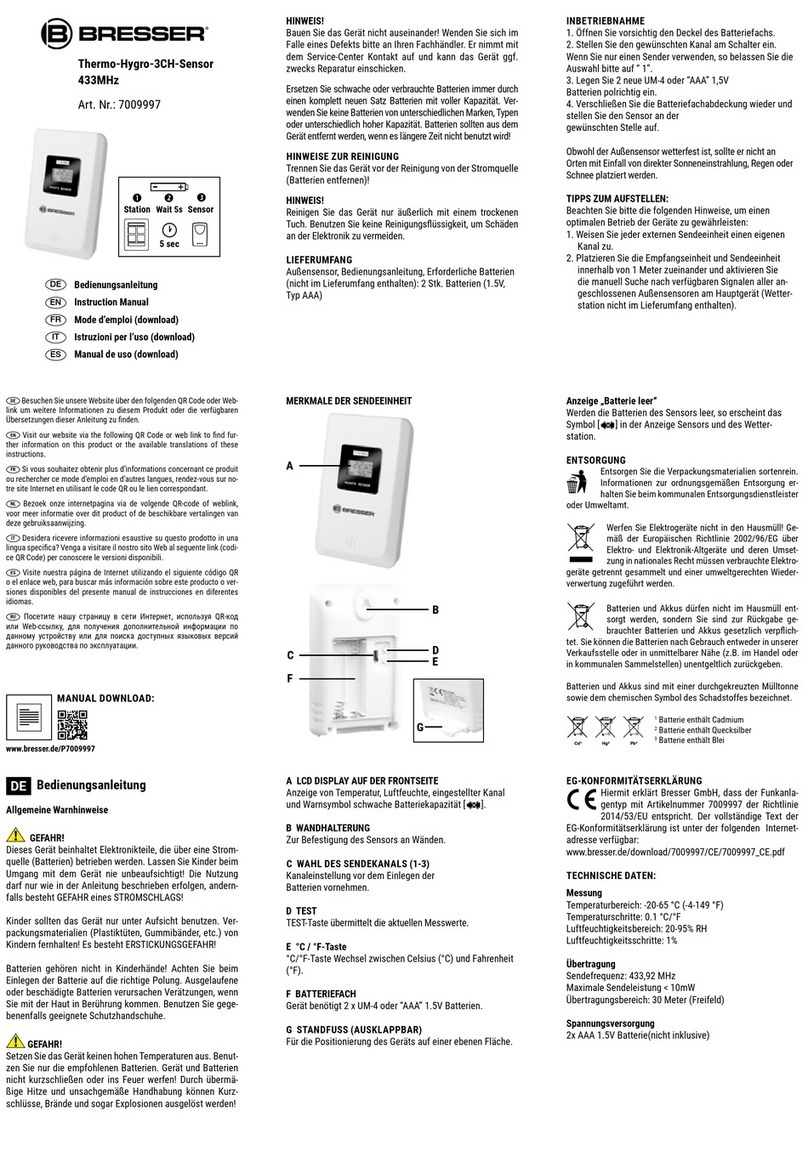
Bresser
Bresser 7009997 instruction manual

